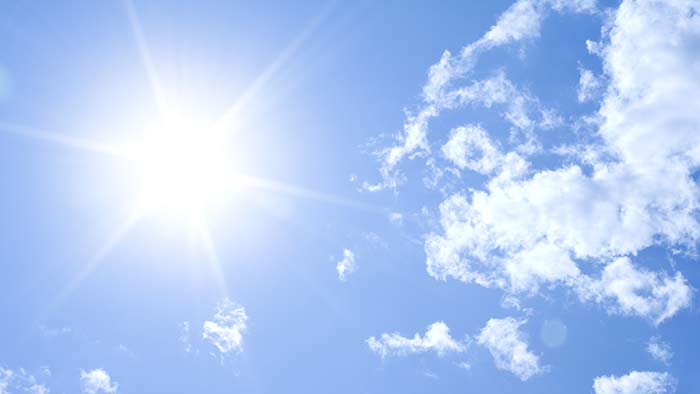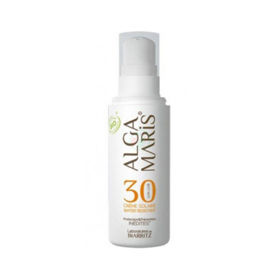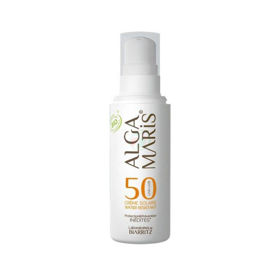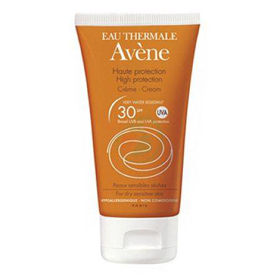The sun is a source of life, it benefits the body because:
• allows the production of vitamin D, which strengthens bones, muscles and the immune system and protects against certain types of cancer,
• helps with skin problems such as psoriasis
• improves mood, reduces symptoms of depression,
• lower levels of the stress hormone cortisol,
• improves sleep quality, gives energy.

Excessive sun exposure is harmful and can cause on the skin:
burns, skin aging, freckles, eye damage, uneven skin pigmentation, telangiectasia (small dilated blood vessels below the skin surface), solar elastosis (wrinkles and sagging skin due to damaged collagen and elastin fibers), melasma (brown spots on the face), benign tumors , actinic keratosis, melanoma and other forms of skin cancer.
Sun allergy
Sun allergy occurs when the immune system responds to exposure to sunlight. It comes in a variety of forms.
Polymorphic light photodermatosis (sun poisoning) is the most common and can occur after a short exposure to the sun. It is especially common in women between the ages of 20 and 40, and is less common in men. The problems appear with the arrival of spring and gradually disappear by autumn, and erupt again the following season.
Symptoms: minor itching, red spots, pimples, blisters or eczema on the hands, feet, upper torso, neck and face. They may be accompanied by chills, headache, nausea. They usually appear within the first two hours after sun exposure and disappear within two or three days of avoiding the sun.
Solar urticaria (hives): after exposure to the sun, red, raised itchy rashes appear.
Phototoxic reaction: sunlight reacts to a chemical substance (sunscreen, perfume, cosmetics, medicines, eg antibiotics, contraceptives, diuretics, etc.) that is applied to the skin or. enter the body.
Symptoms: Itchy rash, small pimples that appear within one to two days after exposure to the sun.
Photoallergic reaction: UV rays cause an immunologically inactive drug to transform into an antigenic molecule that is exposed to a variety of immune events.
Symptoms: The allergy does not develop until one or two weeks after sun exposure. Itchy redness, bubbles with colorless contents appear, followed by peeling in the next stage. The foci can also spread to non-sunlit areas of the body. It may not go away until several weeks after stopping shading or taking the medicine.
Actinic prurigo: the symptoms are the same as in polymorphic photoderatosis. The condition is inherited and erupts as early as childhood or early puberty. It most affects the skin around the mouth and face.
How to prevent sun allergy?
PREVENTIVE:
• phototherapy: four weeks of irradiation with therapeutic UV light,
• start taking a beta-carotene supplement two weeks before sun exposure and take an antihistamine 5 days before.
CURATIVE:
• symptoms may improve after just one day of avoiding the sun,
• Talk to your doctor about switching medicines that cause problems.
• Avoid chemicals that cause phototoxicity.
• use creams, sprays and ointments to relieve itching, e.g. aloe vero.
Tips for protection against UV rays
Avoid sudden prolonged exposure to the sun. Gradually get used to the sun over a long period of time. Slowly increase the time you spend in the sun. Mag. Metka Adamič, Ph.D. med., spec. dermatovenerology, advises: “Individuals with sensitive skin should buy protective products for sensitive skin or skin prone to allergies in pharmacies. Before deciding to apply the cream on larger areas, they should test for possible hypersensitivity on a smaller area of skin. Apply 2 mg of the product per square cm of skin on the inner part of the forearm, cover the smeared area with a patch and after two days check whether there may have been a hypersensitivity reaction - redness, rash, itching. Apply the cream on the skin for 30 minutes before exposing yourself to the sun.
Metka Adamič. dr. med .: “In recent years, dilemmas have arisen about the safety of cosmetics for protection against UV rays due to the content of nanoparticles, for which there is no reliable evidence so far. There is always a belief that the harmfulness of these particles is incomparably less than the harmfulness of ultraviolet radiation for human skin. "
Blue eyes, blondes and children need a higher protection factor.
Apply enough cream on the skin. An adult needs 35 ml of cream (6 heaped teaspoons) for a single application. The application should be renewed every two hours.
Trivia:
The greater risk of getting burned is:
• on a sandy beach, as the sand reflects 25% of the sun's rays,
• in areas with the largest ozone hole (Australia, which is close to the South Pole, where the seasonal ozone hole occurs, has the highest number of skin cancer patients in the world),
• at higher altitudes,
• near the equator,
• in cloudy weather, when 30-40% of UV rays still penetrate through the clouds.
• Older people avoid the sun's rays more than young people between 10 am and 4 pm. However, the use of protective equipment is greatest among young people and decreases with age. The decrease is most pronounced after the age of fifty.
Avoid the sun from 11 am to 4 pm or follow the rule of shade: if the shade is shorter than your height, it is better to avoid the sun. Protect yourself with sunglasses and light clothing. There are special clothes that completely disable UV rays. Dry skin completely protects the skin from UV rays, and wet only half.
Most often, burns are given to people who use a higher protection factor. They stay in the sun longer because they feel protected. If you do not use the cream regularly and properly, it will not adequately protect the skin, even though the factor is higher
• Stay in the sun for as long as you would without sunscreen.
• Waterproof creams should also be reapplied when you get out of the water.
Take care of the children
Babies and toddlers should avoid direct sunlight. Protect them with light clothing, hats and sunglasses. An individual is 80% exposed to the sun before the age of 18, so it is very important for parents to take care that their children are exposed to the sun responsibly. Metka Adamič, Ph.D. med., also draws attention to the correct choice of sunscreens: "Creams suitable for adults are by no means suitable for smaller children, they must not contain chemical protective filters for up to 6 months."
Excessive sun exposure in childhood can later lead to skin cancer.
Source: mojDOKTOR, www.mydoctor.si













